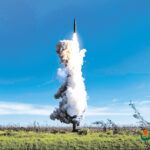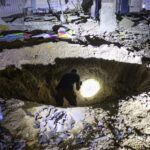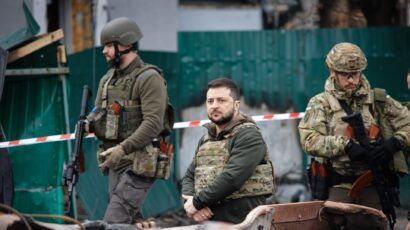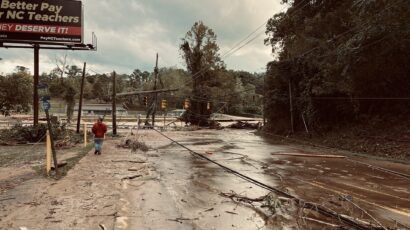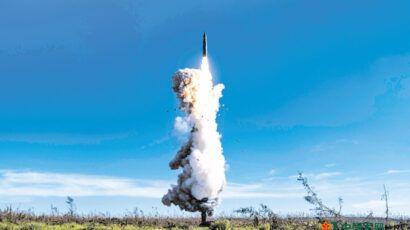More bucks for the bang
By Robert Alvarez | February 23, 2015

Sixty years ago, British historian C. Northcote Parkinson wrote an essay for The Economist magazine that showed, with no small amount of humor, how the British Colonial Office kept getting bigger as the colonies disappeared. “Work expands itself to fill the time available,” he explained “expansion means complexity and complexity, decay.” Over the years his theory of work and time took on an iconic status and is widely known as "Parkinson's Law."
When it comes to managing the eight facilities in the US nuclear weapons complex—three national laboratories, four production plants, and the Nevada National Security Site—Parkinson’s Law is very much alive and well, as illustrated in this year’s 513-page budget request for the Energy Department. Sorting through the document’s minutia, it becomes obvious that the Obama Administration would rather kick the weapons complex can down the road than downsize an ever-more hazardous and unneeded nuclear weapons infrastructure, eliminate redundant bureaucracy, or stop the hoarding of excess weapons and their components—all of which actions would also go a long way toward cutting costs and protecting the public.
In 1999, Congress created the National Nuclear Security Agency (NNSA), a "semi-autonomous" entity within the Energy Department that was intended specifically to address longstanding, major problems in management of the nuclear stockpile. But the new agency actually made things worse, adding a duplicative and redundant bureaucracy to weapons complex management. As a result, problems—from safety and security lapses to soaring costs—have continued.
The problems of the weapons complex are not limited to excess bureaucracy. In 2009, President Obama outlined—before tens of thousands of people in Prague—a “trajectory” of US nuclear arms efforts that aimed for a world free of nuclear weapons. But that supposed trajectory seems to be contradicted by fiscal reality. Even though the nuclear arsenal has shrunk dramatically over the past 25 years, current spending on the nuclear weapons complex rivals if not exceeds such spending during the Cold War. Nuclear weapons spending now takes up about a third of the Energy Department’s total $29.9 billion budget request. By the 2020 fiscal year, the NNSA projects a total of $62 billion will be needed to maintain the nuclear stockpile. Remarkably, approximately $25 billion (or about 40 percent) of that total will go for infrastructure maintenance and replacement and for overhead expenses.
This is just a down payment, however, on the overall cost of a strategic “vision” shared by the Defense and Energy departments. That vision would reduce the number of warhead types in the stockpile to just three interoperable ballistic missile warheads and two air-delivered warheads, down from the current level of seven warhead types. According to the NNSA, it will take 40 to 50 years and some hundreds of billions of dollars to achieve this vision. “Whether this strategy can be sustained with adequate funding over the long term remains to be seen,” a National Research Council committee on strategic nuclear deterrence dryly noted in November 2014.
The ballooning cost of nuclear weapons is dramatically underscored by a simple comparison: the average annual cost per nuclear warhead in 1985, and that same cost today. Thirty years ago, the United States maintained a nuclear stockpile estimated at 23,368 warheads with an annual per unit cost of $354,000 (in 2014 dollars), according to calculations based on data contained in the 1998 book Atomic Audit: The Costs and Consequences of U.S. Nuclear Weapons Since 1940. In 2015, the United States has an estimated 7,300 nuclear weapons, but the average annual per-unit cost is about $1.8 million—a 500 percent increase in per-warhead cost. The old axiom of nuclear weapons providing “more bang for the buck” has been turned on its head; the United States now pays “more bucks for the bang.”
A major factor driving increased costs for the US nuclear arsenal is an oversized nuclear weapons production infrastructure made up of a large number of contaminated excess facilities. As of 2011, the NNSA was responsible for two thirds of the Energy Department’s square ground footage of excess contaminated facilities.
The cost of fixing this problem, the Energy Department said in 2011, was about $10 billion. Since then, the costs of downsizing have increased, as the number of excess contaminated facilities identified by the Energy Department's inspector general has now grown by more than 50 percent. According to a January 2015 inspector general's report, these facilities “continue to degrade and pose significant risks to workers and surrounding communities. Almost 50 percent of these facilities are more than 50 years old and are becoming dangerous.”
The "worst of the worst" is a 71-year-old facility at the NNSA's Y-12 site in Tennessee. In 2008, an Energy Department assessment found that this plant, which is known as the 9201-05 Alpha 5 Facility and spans the size of several football fields, is “one of the greatest liabilities in the Department's complex.” During World War II, it employed tens of thousands of people to produce the uranium 235 used in the Hiroshima bomb. The facility was used for several decades after the war for the handling of numerous hazardous materials. The “footprint” of excess contaminated facilities at the Y-12 site alone is larger than the ground occupied by some of the largest buildings in the world, including the Target import warehouse in Washington State, Amazon’s giant distribution warehouse in Texas, and the Pentagon.
In a time-honored tradition, the Energy Department and NNSA are responding to the inspector general’s findings by forming a working group to study the Y-12 problem, something that was studied in detail more than 25 years ago by the National Research Council. Regardless of the conclusions that the current study reaches, one thing is clear: Demolition of this building will be expensive and compete directly for funds that have already been allotted to other efforts. Even though the Energy Department's inspector general reports that there is “the potential for an explosion or reaction associated with remaining contaminants” at the Y-12 facility, the reality is that funding will need to be diverted from "mission work"—the care and feeding of the nuclear arsenal—to deal with conditions at Y-12 that pose real risks to workers and the public.
Neglect has also led to the hoarding of spare non-nuclear parts of nuclear warheads at several facilities, many of which are decades old and will never again be needed. According to an April 2014 report by the Government Accountability Office (GAO), about 1.7 million spare parts for nuclear weapons have been stored for 25 years or more at the Pantex Plant in Texas and the Kansas City Plant in Missouri. “We observed several components covered in dust that appeared not to have been touched or moved in years, if not decades," the GAO said. Nearly a half million of those parts are from weapons no longer in the active stockpile, including some weapons built more than 50 years ago.
Thousands of excess intact thermonuclear components, known as canned sub-assemblies (CSAs) and containing tons of highly enriched uranium, are stockpiled at the Y-12 plant. The GAO reported that the NNSA decisions to retain the CSAs have been "driven by national security considerations and not by Y-12 workload considerations.” As I have written, the justifications for holding onto intact CSAs have stretched the boundary of imagination and have included their “potential use in planetary defense against earthbound asteroids.”
In the late 1980s, US Sen. John Glenn of Ohio helped lead the effort to deal with the environmental and health legacy of the nuclear arms race. “What good is it to protect ourselves with nuclear weapons," he would often ask, “if we poison our people in the process?” Unfortunately, this sentiment seems to be missing from the Obama administration and Congress, and one of professor Parkinson’s most important lessons—that “delay is the deadliest form of denial”—remains lost on US decision makers.
Together, we make the world safer.
The Bulletin elevates expert voices above the noise. But as an independent nonprofit organization, our operations depend on the support of readers like you. Help us continue to deliver quality journalism that holds leaders accountable. Your support of our work at any level is important. In return, we promise our coverage will be understandable, influential, vigilant, solution-oriented, and fair-minded. Together we can make a difference.
Topics: Columnists, Nuclear Weapons



